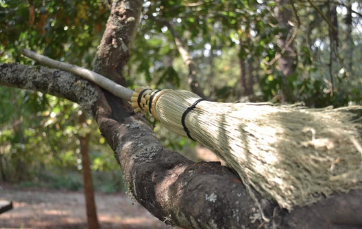To be honest, when I started brainstorming what to write for this week’s blog post, I wondered if readers were starting to get a bit bored of the wild edibles that I tend to highlight. As a farmer and forager, plants are what I gravitate towards. Also, a human, I like to eat, so plants are what I gravitate towards. After harvesting some broom grass to experiment with brush broom-making from a landscape I’ve grown close with over these autumn months, it occurred to me that others might be curious about the wild and native grasses that you can make brooms from too. Although Halloween has since past, brooms are always relevant! Brooms, though some might look upon them as mundane, have great symbolic significance as well as craftsmanship. Brooms appear anywhere from tales of witches to many wedding traditions (such as jumping the broom in many African cultures). They can also tell you quite a bit about the maker and the landscape it originates from. It is also important to mention that one can fashion grass mats and natural fiber cordage from some of these same plants.
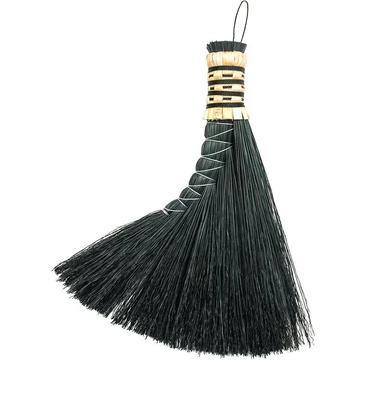
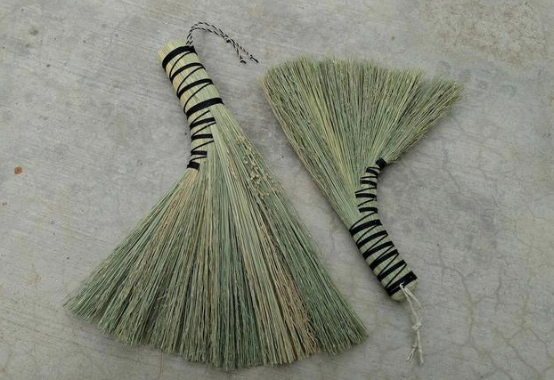
Please join me in this shallow dive into the world of brooms! I am learning along with you. I have much to learn about the artform, and my way of learning is often by doing. I am particularly curious in interacting with wild plants beyond the lens of what is edible or inedible, what is useful or not useful. It is often easy to fall into the binary, or to leave it entirely alone. Getting curious about broom-making is intended to be a fresh way for me, and perhaps you after reading, to get more familiar with the plants around us. I chose broom grass because I’ve seen it in the meadows all through summer and autumn. Broom grasses are also called bushy beardstem, bushy bluestem, Whiskey stem, and bushy broomsedge, the nomenclature is Andropogon glomeratus and Andropogon virginicus. A native grass to the east coast and south, it can be found in many meadows and high brush areas.
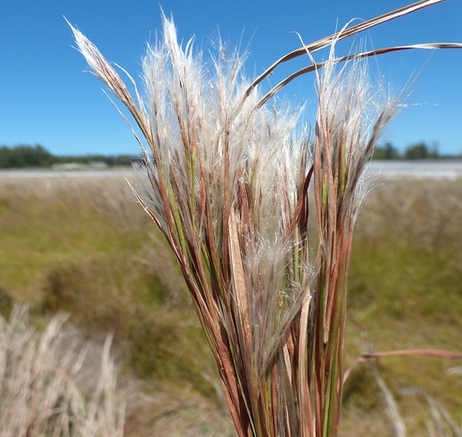
It is also used as an ornamental across the country, though is known to proliferate quickly and take over (so although native, has a tendency these days to be quite invasive as well). Broom grass is sometimes also planted for erosion control on hillsides and used in wetland restoration projects. Farmers tend to view broom grass as a harbinger of bad luck, signalling poor soil health for planting conventional crops, and a less-tasty grazing meal for cows. As a clumping tall grass that dries out and falls, it can become self-sufficient mulch and a warm place for small animals to burrow into warmth in winter. The seeds are carried through the air, so when you come upon a field covered in broom grass, it feels as though it is snowing or teeming with fairies. It’s roots are used by some First Nations tribes as a remedy for back aches and digestion issues.
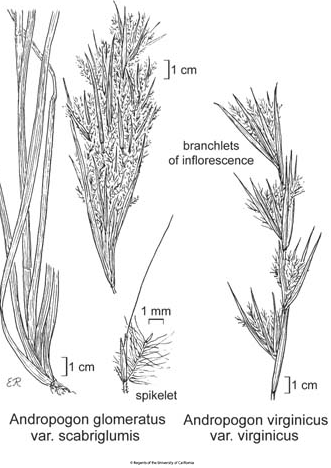
So after learning all of this…my question is still, is broom grass actually used to make brooms? Why is it called broom grass? Please see this excerpt from a blog post on Dave’s Garden written by Melody Rose:
“Yes, the grass stalks were harvested, bound into bundles and used to sweep early [colonial] homes and cabins and there’s actually quite a bit of interesting lore concerning brooms that had developed over the centuries. It was thought that it was bad luck to move your old broom to a new home since it was believed that you brought the old dirt with you. However, you must sweep something in to the new house with your broom, before sweeping dirt out to bring good luck. If for some reason you have to bring an old broom to a new home, set it inside through a window since that negates the bad luck curse. You’re not supposed to sweep after sunset because that disturbs evil spirits. You also sweep away your dearest friend when you sweep after sunset. It is unlucky to sweep dirt out of an open door, instead, pick up the dirt and carry it outside. Bad luck comes if you borrow a broom, unless you borrow it without the owner knowing and return it unseen. Several days of the week were considered unlucky to use a broom as well and if the superstitions were accurate, no one should sweep between Friday and Monday.”
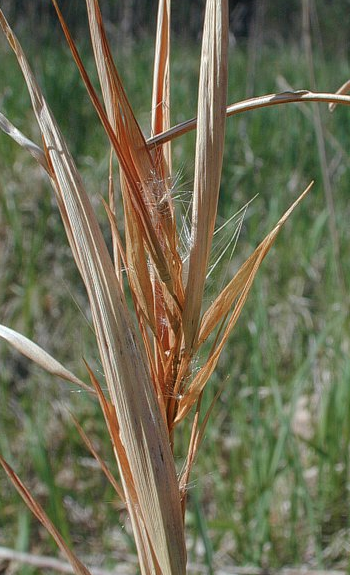
So, that is perhaps why broom grass is called broom grass! I will have to report back later, maybe in 2021, how my broom from broom grass turns out. It is currently curing and drying out. It is important to wait until it is entirely dry and there is no mildew or any other sort of moist fungus growing on the grass. If you do not wait, the mildew will take over the entire broom, which seems to be besides the point!
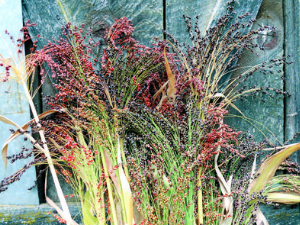
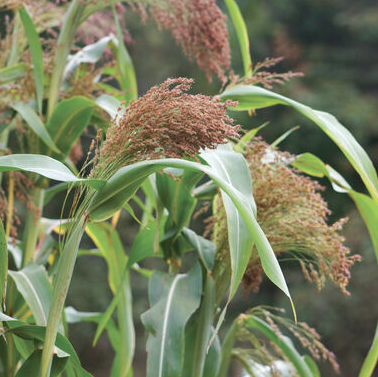
After learning about broom grass, I became curious about other wild plants that are used to make brooms. You might have already heard of broomcorn, which is the most popular material. Broomcorn is a cultivated variety of sorghum. In searching Google Scholar for some papers or resources about wild plants, I came across a publication called “Plants traditionally used to make brooms in several European countries” from the Journal of Ethnobiology and Ethnomedicine. Within some of the lists, I found many familiar plants such as Salix, which is Willow. Artemisia varieties, which are sweet wormwood and mugwort (in the Aster family). Prunus Spinosa, the naturalized blackthorn. I saw all kinds of plants within these lists, some I would have never imagined or considered due to their appearance. Learning about the uses of some of these plants in broom-making challenged my assumptions. I was most excited to learn how to make a broom from Scabiosa atropurpurea, which is a cultivated flower I became familiar with while working on my friend’s flower farm. They are also known as the Pincushion Flower in the Honeysuckle family, and are often white or purple.
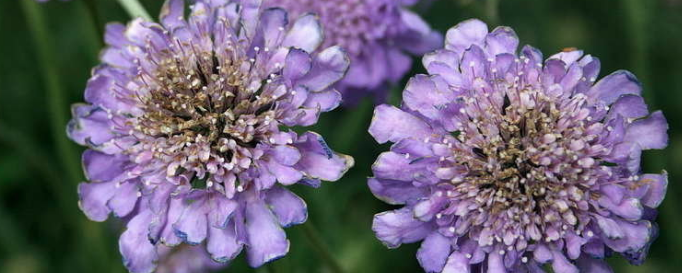
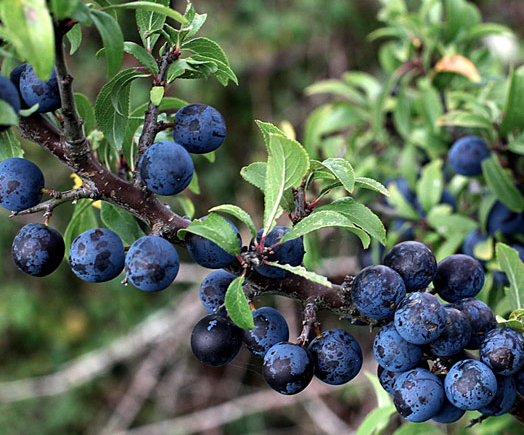
So after some exploration, I am excited to learn more and give broom-making a try. I’ll probably use hemp twine to start for the handle and to keep the broom together, and wait until I have access to a wood shop to even attempt turning a branch into a post for the broom. I hope to make a simple whisk broom with the broom grass. If you are curious to learn more about broom-making, there are many artisans on the great wide web!
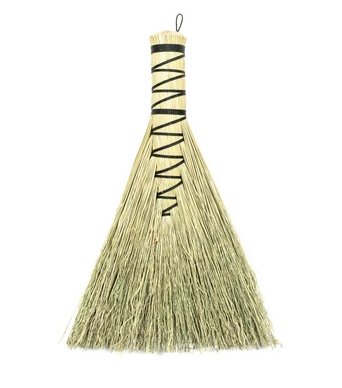
Thanks for indulging me with this one. Please let me know what wild plant you would like to try making a broom from by commenting!

